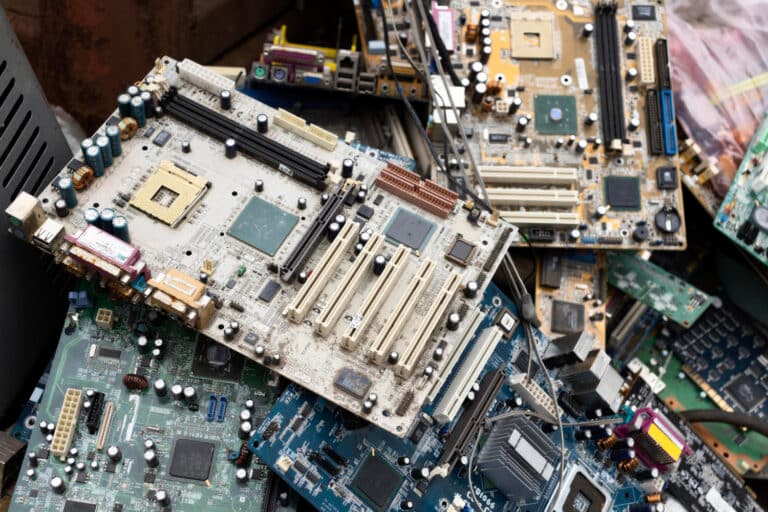When you build a data destruction plan, you’re doing it to keep your business safe from leaks, breaches, or other headaches tied to unwanted data hanging around. Whether it’s old hard drives, outdated software with storage logs, or stacks of documents in the back office, your goal is to get rid of that information completely. A strong plan keeps data from falling into the wrong hands or sticking around longer than it should. But making a plan is just one part of the picture. Getting it to work the way you intended is another story.
Things can go wrong. Maybe the tools being used don’t actually destroy the data, or maybe someone skips a step entirely. When your plan backfires, it leaves your business exposed. It might be a small hiccup or a major problem, depending on what went wrong. Either way, it’s important to know what to look for and how to handle it fast. That’s why knowing the common mistakes and having a backup strategy can make all the difference when things don’t go as planned.
Common Causes of Data Destruction Plan Failures
Even the best-looking plan can fall apart when it meets real-life chaos. Data destruction might feel like a one-and-done task, but it actually needs attention, reliable tools, and clear procedures. Here are a few reasons these plans fail:
1. Outdated or Poorly Functioning Tech
If the software or tools used to wipe or shred data aren’t up to date, they may not complete the job. Some machines might skip sectors of a hard drive or fail to fully wipe memory cards. With how fast tech changes, it’s easy to miss signs that your equipment isn’t cutting it anymore.
2. Human Mistakes or Shortcuts
Even with a checklist, people can miss steps. Someone might think deleting a file is enough, or an employee might dispose of a device before ensuring the data is wiped. These kinds of oversights leave gaps in what was supposed to be a closed process.
3. Lack of Training or Awareness
If employees don’t fully understand how to follow the data destruction plan—or why it’s even important—they might not take it seriously. Skipping training or failing to update staff on changes means the plan falls apart in day-to-day use.
Let’s say someone in your office uses a free data wipe tool they found online without running it by your IT team. The tool looks like it worked, but it didn’t fully wipe the drive. That device ends up donated, sold, or tossed. A few weeks later, someone starts getting phone calls asking about sensitive client records. That’s the kind of scenario that starts with a small mistake and grows into real damage.
Small errors like these pile up if not addressed. A plan isn’t strong if it’s not followed closely and reviewed often. Knowing these common weak spots helps you patch the holes before they lead to bigger issues.
Immediate Steps to Take When Things Go Wrong
When you discover that your data destruction plan didn’t work the way it should, time matters. Whether you caught the mistake right away or it came up after something slipped through the cracks, quick action can help prevent more damage from being done.
Start by figuring out exactly what went wrong. Was a hard drive not wiped correctly? Did someone skip a software step or dump old equipment without double-checking it first? Dig into the process and get specifics before you do anything else. Guessing can lead to more confusion.
Once you know what happened, work on containing the problem. If a device left your building with sensitive data still on it, make sure you track where it went. Depending on the situation, you may need to contact whoever received that hardware and ask them to return or destroy it properly. If data made it into the wrong hands, prepare to deal with the fallout. You may also have to alert clients, partners, or employees whose data could be at risk.
Clear, transparent communication isn’t just the right thing to do—it helps maintain trust. Let people know what was affected and what you’re doing to fix it. That might include sending out update emails, holding staff meetings, or speaking with legal or insurance teams if the issue was larger than internal operations. It’s not about causing panic, it’s about staying accountable and responsible.
Mistakes happen. What comes next matters more. By responding quickly, containing the issue, and being honest with those involved, you can prevent a bad situation from turning into something much worse.
Smart Ways to Strengthen Your Plan
Once you’ve dealt with the immediate issue, it’s time to take a hard look at your plan and figure out how to prevent a repeat. A good recovery strategy isn’t just about patching things up—it’s about building a stronger foundation.
Make these steps part of your regular process:
– Upgrade outdated tools: If your wiping software or shredders haven’t been replaced or inspected in years, it’s time to look into better options
– Train staff regularly: Don’t expect people to automatically know what to do with equipment. Go over the process step by step and refresh everyone’s memory often
– Test your plan: Do surprise audits or small stress tests. Make sure the plan works under real conditions, not just on paper
– Keep records: Having logs of when, where, and how devices were cleaned out helps clarify what’s been handled correctly
– Review after each incident: Whether it’s a near-miss or a full-on mishap, analyze the breakdown and fix the process before moving on
That one time someone forgot to wipe a device before giving it away? It shouldn’t happen twice. Throwing the blame around won’t solve anything, but learning from each situation will. These habits should turn into part of your workplace routine so they don’t get overlooked again.
Even small changes make a difference. Swapping in better software or spending an afternoon walking your team through the steps could save your business from a big headache later. The way to keep a problem from repeating itself is to keep improving every part of your plan.
When It’s Time to Get Outside Support
There’s a point where trying to do everything in-house just doesn’t cut it anymore. If your team doesn’t have the time or know-how to handle secure data destruction, bringing in experts can help things run smoother.
Professional data destruction services are built to handle things most offices aren’t equipped for. They’ve got the tools that meet modern standards and can deal with everything from single hard drives to large-scale equipment. It’s their job to take the guesswork out of the process, so the responsibility doesn’t sit entirely on your team’s shoulders.
But it’s not just about the gear. A good data destruction provider knows how to set up workflows that fit your business. They can walk you through what equipment needs to be destroyed, how best to track the process, and ways to keep everything secure from start to finish. Instead of reinventing the wheel every time a device gets old, you’ll have a system that’s already been built to handle it safely and correctly.
On top of all that, third-party providers often keep documentation that proves what was destroyed and when. That helps take the pressure off of your internal tracking and adds a layer of security if something ever comes into question.
Especially if you’re managing large amounts of data in Augusta or across multiple departments, outside support isn’t just a backup plan. It becomes part of how you keep things flowing without cutting corners. Knowing help is there when you need it takes the stress out of figuring it all out on your own.
Building a More Reliable Data Future
When a plan falls apart, the instinct might be to sweep it under the rug or blame the person who slipped up. But setbacks hold value when you use them to spot gaps and build something stronger. Instead of focusing on what failed, put your attention on what you can improve moving forward.
The first thing is rebuilding trust, both inside and outside of your team. If clients or employees were affected, make sure they see your commitment to fixing the issue. Then show them you’ve made changes that matter—better tools, clearer instructions, smarter oversight. Trust isn’t restored by promises, but by action they can see.
Next, turn your attention back to the plan itself. Is it too complex to follow? Are the steps outdated or confusing? Even a great system needs regular cleaning up. Put time on the calendar each quarter to review how equipment is destroyed, who’s in charge of what, and whether it all lines up with your goals now.
Mistakes are never fun, but they don’t have to be permanent. They can help your team become sharper, your systems get tighter, and your business gain more control over the data it holds. When you treat each misstep like a checkpoint instead of a failure, your data plan just keeps getting stronger.
Augusta businesses count on safe data handling not just to stay compliant but to stay trustworthy. Fixing a misstep sends a clear message: your business learns, grows, and protects what matters most.
When your data destruction plan needs strengthening, turning to professionals can make all the difference. Beyond Surplus offers secure disposal of IT equipment to ensure that your sensitive information does not fall into the wrong hands. Let us handle the details with trusted solutions that protect your business’s integrity. Contact us today to discuss your unique needs and how we can keep your data secure.



